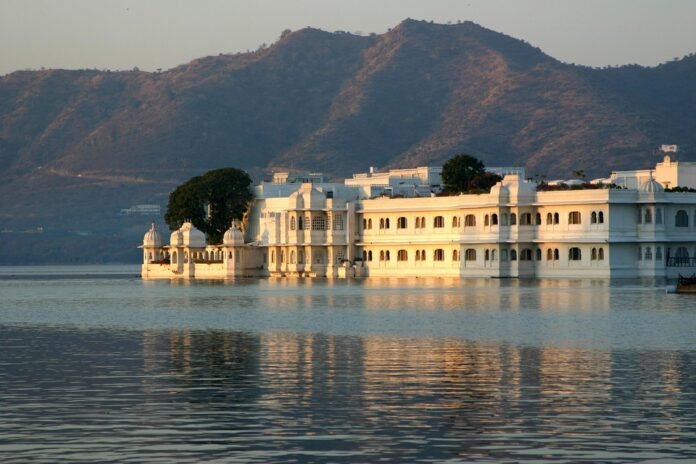Of course. Here is an article on the topic "Make in India: Can the Initiative Deliver on Its Promises?"
Make in India: A Decade On, Can the Lion Roar Louder?
When the "Make in India" initiative was launched in 2014, it was heralded by a powerful and evocative symbol: a striding lion made of industrial gears. The message was clear and ambitious. India, long seen as a service-sector giant and an agricultural economy, was ready to step onto the world stage as a formidable manufacturing powerhouse.
The promises were bold: to increase the manufacturing sector’s growth to 12-14% per annum, raise its share of the GDP from a stagnant 16% to 25% by 2025, and, most critically, create 100 million new jobs. A decade later, with the global economic landscape reshaped by a pandemic, geopolitical shifts, and technological disruption, it’s a crucial time to ask: Has the lion delivered on its promises, and can it truly roar on the global stage?
The Triumphs: Tangible Successes and a Shift in Narrative
To dismiss "Make in India" as a failure would be a gross oversimplification. The initiative has achieved significant and tangible successes that have laid a vital foundation for future growth.
First and foremost is the unprecedented surge in Foreign Direct Investment (FDI). India has consistently attracted record FDI inflows, crossing the $84 billion mark in FY22. The initiative successfully rebranded India as an attractive investment destination, bolstered by a dramatic improvement in the World Bank’s Ease of Doing Business rankings, where India leaped from 142nd in 2014 to 63rd in 2019.
The most visible success story is in electronics manufacturing. From being a net importer of mobile phones, India has transformed into the world’s second-largest mobile phone manufacturer. The "Phased Manufacturing Programme" and later the Production Linked Incentive (PLI) scheme have incentivized global giants like Apple and Samsung to not just assemble, but increasingly manufacture components in India. This "Made in India" tag on a smartphone is a powerful symbol of the initiative’s potential.
Other sectors have also seen a boost. Defence manufacturing has pivoted towards indigenization, with projects like the Tejas fighter jet and the aircraft carrier INS Vikrant showcasing growing domestic capabilities. The automotive, pharmaceutical, and chemical sectors have also deepened their manufacturing roots, reinforcing India’s position as a key global supplier.
More than just numbers, "Make in India" fundamentally shifted the national narrative. It put manufacturing at the heart of policy-making, streamlining processes, and signaling to the world that India was open for business.
The Hurdles: Where the Roar Fades
Despite these impressive gains, the initiative has fallen short on its most ambitious promises.
The goal of increasing manufacturing’s share of GDP to 25% remains elusive. The figure has stubbornly hovered between 15-17%, far from the target. This indicates that while specific sectors have boomed, broad-based industrial growth has been slower than anticipated.
More concerning is the job creation deficit. The promise of 100 million new jobs was a monumental undertaking, and the reality has been a stark contrast. While manufacturing has created employment, it has not been at the scale needed to absorb India’s burgeoning youth population. Many of the new manufacturing jobs are in assembly-line work, which, while valuable, doesn’t always translate to the high-skill, high-wage employment envisioned.
The reasons for this gap are complex and deep-seated. "Make in India" is not a magic wand; it operates within an ecosystem still grappling with structural challenges:
- Infrastructural Bottlenecks: While improving, logistics, energy, and transport costs can still be high, impacting competitiveness.
- Complex Labor Laws: Despite some reforms, navigating India’s labor regulations remains a daunting task for many businesses, discouraging large-scale hiring.
- Land Acquisition: The process of acquiring land for industrial projects remains a significant hurdle.
- The Skill Gap: There is often a mismatch between the skills the modern manufacturing industry needs and the training the workforce possesses.
The Path Forward: From "Assemble in India" to "Truly Make in India"
The government has shown an awareness of these challenges, evolving its strategy. The Production Linked Incentive (PLI) scheme is the next logical step. By rewarding companies for incremental production, the PLI scheme is a more targeted, performance-oriented approach aimed at creating "champions" in strategic sectors like semiconductors, solar panels, and advanced batteries.
The ultimate success of "Make in India," however, will depend on moving beyond assembly. The goal must be to transition from "Assemble in India" to "Design, Innovate, and Make in India." This requires building a robust ecosystem for Research & Development (R&D), fostering intellectual property creation, and nurturing a culture of innovation.
To make the lion’s roar truly powerful, the focus must now be on:
- Deeper Structural Reforms: Tackling the "four Ls"—Land, Labour, Liquidity, and Laws—is non-negotiable.
- Investing in Skills: Aggressively aligning the "Skill India" mission with the needs of advanced manufacturing.
- Strengthening Domestic Value Chains: Reducing reliance on imported components, especially in critical sectors.
- Fostering R&D: Incentivizing private sector investment in research and building world-class innovation hubs.
The Verdict
So, can "Make in India" deliver? The answer is a qualified yes. The initiative has successfully kick-started India’s manufacturing engine and put it on the global map. It has proven that with focused policy and political will, India can compete and win in complex manufacturing sectors.
However, the journey is far from over. The initial promises were aspirational, perhaps overly so. The real success of "Make in India" will not be measured by whether it hits a specific GDP target by a certain year, but by its ability to foster a durable, resilient, and innovative manufacturing ecosystem that creates sustainable jobs for its people. The lion has taken its first confident steps. For it to truly roar, the path ahead requires not just grand slogans, but the relentless and difficult work of deep, structural reform.

